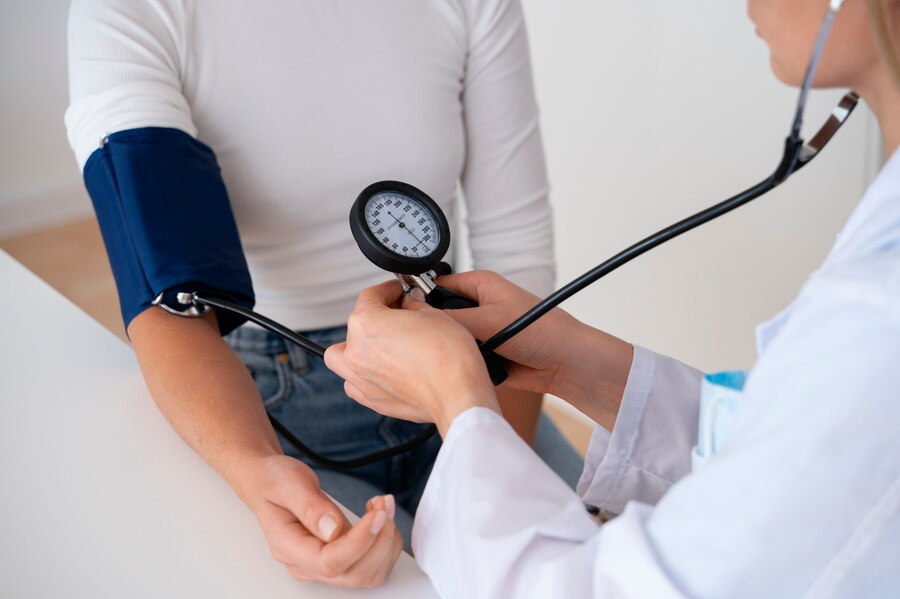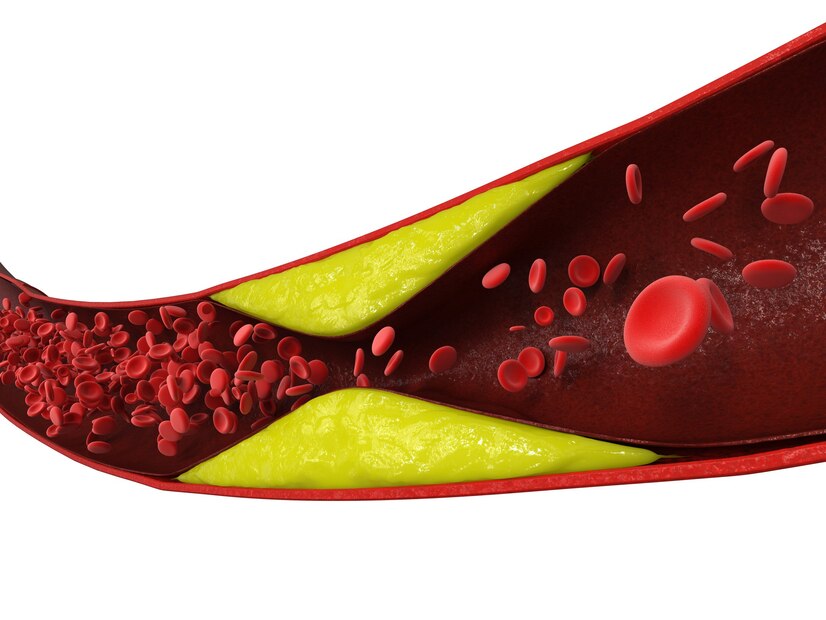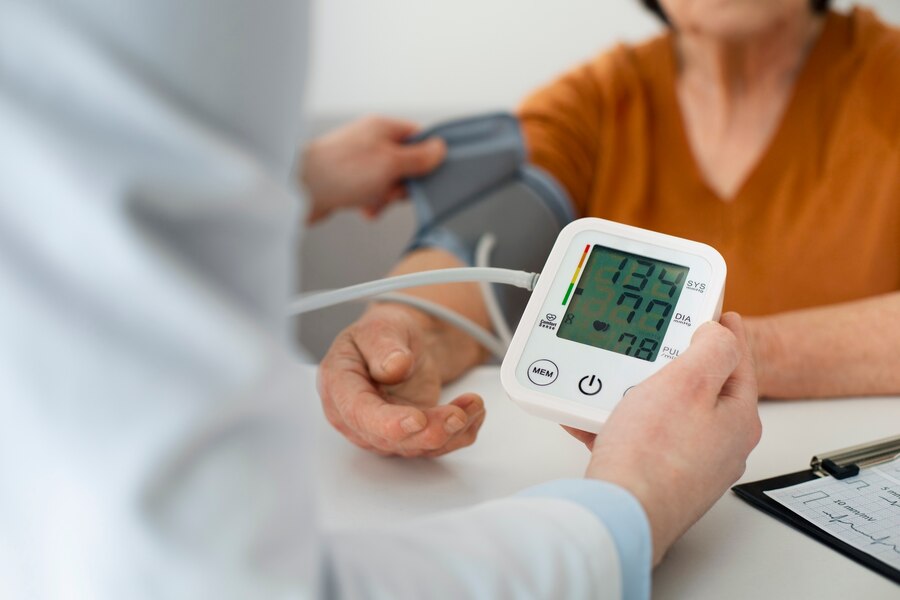Recognizing the signs of high cholesterol and taking proactive steps to manage it is crucial for maintaining heart health and reducing the risk of cardiovascular disease. By making lifestyle changes, seeking medical advice, and adhering to prescribed treatments, individuals can effectively lower their cholesterol levels and improve their overall well-being. Cholesterol, a fatty substance found in the blood, is essential for the body’s normal functioning. However, elevated levels of cholesterol can pose significant health risks. In this article, we will explore the signs that may indicate high cholesterol levels and what you can do about it.
1. Introduction to High Cholesterol
High cholesterol, also known as hypercholesterolemia, is a condition characterized by elevated levels of cholesterol in the blood. Cholesterol is a fatty substance that is essential for various bodily functions, such as building cell membranes and producing hormones. However, excessive levels of cholesterol can lead to health complications, particularly cardiovascular diseases like heart attack and stroke. High cholesterol often does not present noticeable symptoms, making it important to monitor cholesterol levels through routine screenings. By understanding the risks associated with high cholesterol and taking proactive steps to manage it, individuals can reduce their risk of developing serious health problems and improve their overall well-being.
2. Understanding Cholesterol
What is Cholesterol?
Cholesterol is a fatty substance that is essential for the body’s normal functioning. It is produced by the liver and can also be obtained from certain foods. Cholesterol plays a vital role in building cell membranes, producing hormones, and aiding in digestion. There are two main types of cholesterol: LDL (low-density lipoprotein) and HDL (high-density lipoprotein). LDL cholesterol is often referred to as “bad” cholesterol because high levels of it can lead to the buildup of plaque in the arteries, increasing the risk of heart disease and stroke. On the other hand, HDL cholesterol is known as “good” cholesterol because it helps remove LDL cholesterol from the bloodstream, reducing the risk of heart disease. Understanding the different types of cholesterol and their roles in the body is essential for managing cholesterol levels and maintaining overall health.
Types of Cholesterol
There are two primary types of cholesterol: LDL (low-density lipoprotein) and HDL (high-density lipoprotein). LDL cholesterol, often referred to as “bad” cholesterol, can build up in the arteries, leading to blockages. HDL cholesterol, on the other hand, is considered “good” cholesterol as it helps remove LDL cholesterol from the bloodstream.
Cholesterol exists in the body in different forms, each with its own characteristics and effects on health.
- LDL (Low-Density Lipoprotein) Cholesterol: LDL cholesterol, often referred to as “bad” cholesterol, is responsible for carrying cholesterol from the liver to the cells throughout the body. However, when there is an excess of LDL cholesterol in the bloodstream, it can build up on the walls of arteries, forming plaque. This buildup can narrow the arteries and increase the risk of heart disease and stroke.
- HDL (High-Density Lipoprotein) Cholesterol: HDL cholesterol is often called “good” cholesterol because it helps remove LDL cholesterol from the bloodstream. HDL carries cholesterol away from the arteries to the liver, where it is broken down and excreted from the body. Higher levels of HDL cholesterol are associated with a lower risk of heart disease.
3. Importance of Monitoring Cholesterol Levels
Regularly monitoring your cholesterol levels is crucial for maintaining good health and preventing serious medical conditions. While high cholesterol often doesn’t cause noticeable symptoms, it can significantly increase your risk of heart disease, stroke, and other cardiovascular problems. By keeping track of your cholesterol levels through routine screenings, you can identify any potential issues early on and take appropriate steps to manage them. Early detection allows for timely intervention, which can help lower your risk of complications and improve your overall quality of life. Therefore, making cholesterol monitoring a priority is essential for safeguarding your long-term health and well-being.

4. Common Causes of High Cholesterol
Several factors contribute to high cholesterol levels, including genetics, diet, lifestyle choices, and underlying health conditions such as diabetes and thyroid disorders. High cholesterol levels can be attributed to various factors, including:
- Unhealthy Diet: Consuming foods high in saturated and trans fats, such as red meat, full-fat dairy products, and processed foods, can raise LDL cholesterol levels in the bloodstream.
- Lack of Physical Activity: Sedentary lifestyles can lead to weight gain and lower levels of HDL cholesterol, increasing the risk of high cholesterol.
- Obesity or Being Overweight: Excess body weight, particularly around the waist, is associated with higher levels of LDL cholesterol and triglycerides, as well as lower levels of HDL cholesterol.
- Smoking: Smoking damages the walls of blood vessels, making them more susceptible to the buildup of cholesterol-containing plaque.
- Genetics: Family history and genetics can play a significant role in determining cholesterol levels. Inherited conditions, such as familial hypercholesterolemia, can cause elevated cholesterol levels from a young age.
- Age and Gender: Cholesterol levels tend to increase with age, and men generally have higher cholesterol levels than women until menopause, after which women’s cholesterol levels may rise to be similar to men’s.
5. Symptoms of High Cholesterol
High cholesterol often does not cause noticeable symptoms, which is why it is often referred to as a “silent” condition. However, in some cases, individuals with high cholesterol may experience:
Physical Symptoms:
- Chest Pain or Angina: High cholesterol can lead to the buildup of plaque in the arteries, restricting blood flow to the heart muscle and causing chest pain or discomfort, known as angina.
- Yellowish Deposits on the Skin (Xanthomas): Yellowish, fatty deposits may develop under the skin, particularly around the eyes, elbows, knees, or buttocks. These deposits, called xanthomas, can indicate high levels of cholesterol in the blood.
- Swollen Tendons or Tendon Xanthomas: High cholesterol can cause swelling or thickening of tendons, especially in the hands, feet, or Achilles tendon. Tendon xanthomas are fatty deposits that form on tendons and may be tender to the touch.

Laboratory Tests:
In many cases, high cholesterol is detected through routine blood tests, such as a lipid profile. These tests measure levels of LDL (bad) cholesterol, HDL (good) cholesterol, and triglycerides in the blood. Elevated LDL cholesterol and triglyceride levels, along with low HDL cholesterol levels, may indicate high cholesterol.
It’s important to note that these symptoms and laboratory tests are not specific to high cholesterol and can be caused by other underlying health conditions. Therefore, regular screenings and consultation with a healthcare professional are essential for accurate diagnosis and appropriate management of cholesterol levels.
6. Risk Factors Associated with High Cholesterol
Understanding these risk factors is essential for identifying individuals who may be at higher risk of developing high cholesterol. By addressing modifiable risk factors through lifestyle changes and medical interventions, individuals can reduce their risk of high cholesterol and related health complications. Several factors can increase the likelihood of developing high cholesterol, including:
- Unhealthy Diet: Consuming a diet high in saturated and trans fats, as well as cholesterol-rich foods, can contribute to elevated levels of LDL (bad) cholesterol in the bloodstream.
- Lack of Physical Activity: Sedentary lifestyles can lead to weight gain, decreased levels of HDL (good) cholesterol, and increased levels of triglycerides, all of which are risk factors for high cholesterol.
- Obesity or Being Overweight: Excess body weight, particularly abdominal obesity, is associated with higher levels of LDL cholesterol and triglycerides, as well as lower levels of HDL cholesterol.
- Smoking: Smoking damages blood vessel walls, making them more susceptible to the buildup of cholesterol-containing plaque. Smoking also lowers HDL cholesterol levels, further increasing the risk of high cholesterol.
- Family History: A family history of high cholesterol or heart disease can increase an individual’s risk of developing high cholesterol, as genetics can play a significant role in cholesterol levels.
- Age and Gender: Cholesterol levels tend to increase with age, and men typically have higher cholesterol levels than premenopausal women. However, after menopause, women’s cholesterol levels may rise to be similar to men’s.
- Medical Conditions: Certain medical conditions, such as diabetes, hypothyroidism, and kidney disease, can affect cholesterol levels. Additionally, hormonal conditions like polycystic ovary syndrome (PCOS) can lead to changes in cholesterol metabolism.
7. Complications of High Cholesterol
Managing cholesterol levels through lifestyle changes, medication, and regular medical monitoring is crucial for reducing the risk of these complications and maintaining overall cardiovascular health. Untreated high cholesterol can lead to various health complications, including:
- Atherosclerosis: High levels of LDL cholesterol can cause the buildup of plaque on the walls of arteries, a condition known as atherosclerosis. This buildup narrows the arteries and restricts blood flow, increasing the risk of heart attack and stroke.
- Coronary Artery Disease (CAD): Atherosclerosis can affect the arteries supplying blood to the heart muscle, leading to coronary artery disease. CAD can cause chest pain (angina), heart attack, and other serious cardiovascular events.
- Peripheral Artery Disease (PAD): Atherosclerosis can also affect arteries outside of the heart, such as those supplying blood to the legs and arms. Peripheral artery disease can cause leg pain, numbness, and in severe cases, tissue damage and amputation.
- Stroke: If plaque buildup in the arteries supplying blood to the brain leads to a blockage or rupture, it can result in a stroke. A stroke occurs when blood flow to part of the brain is interrupted, causing brain damage and potentially permanent disability.
- Transient Ischemic Attack (TIA): Also known as a “mini-stroke,” a transient ischemic attack is caused by a temporary interruption of blood flow to the brain. TIAs produce symptoms similar to a stroke but typically last for a shorter duration and do not cause permanent brain damage. However, TIAs are warning signs of an increased risk of stroke.
- Cardiovascular Events: Individuals with high cholesterol are at a higher risk of experiencing cardiovascular events, such as heart attack, angina, and sudden cardiac death, due to the narrowing and blockage of arteries.
- Other Health Conditions: High cholesterol can also contribute to other health problems, including high blood pressure, diabetes, and kidney disease, further increasing the risk of complications.

8. Lifestyle Changes to Manage Cholesterol
By incorporating these lifestyle changes into your daily routine, you can effectively manage cholesterol levels and reduce the risk of cardiovascular disease. It’s important to consult with a healthcare professional before making any significant changes to your diet or exercise regimen, especially if you have existing health conditions or are taking medication. Making healthy lifestyle choices is key to managing cholesterol levels and reducing the risk of cardiovascular disease. Here are some effective lifestyle changes:
- Heart-Healthy Diet: Adopting a diet rich in fruits, vegetables, whole grains, and lean proteins can help lower cholesterol levels. Choose foods low in saturated fats and trans fats, and limit cholesterol-rich foods like red meat, full-fat dairy products, and processed foods.
- Reduce Saturated and Trans Fats: Limiting the intake of foods high in saturated and trans fats, such as fried foods, baked goods, and fatty cuts of meat, can help lower LDL (bad) cholesterol levels.
- Increase Soluble Fiber Intake: Foods high in soluble fiber, such as oats, beans, lentils, fruits, and vegetables, can help lower LDL cholesterol levels by reducing its absorption in the bloodstream.
- Incorporate Healthy Fats: Include sources of healthy fats, such as nuts, seeds, avocados, and olive oil, in your diet. These fats can help raise HDL (good) cholesterol levels and improve overall heart health.
- Limit Sugar and Refined Carbohydrates: High intake of sugar and refined carbohydrates can contribute to weight gain and elevated triglyceride levels, which are risk factors for high cholesterol. Opt for whole grains and minimize added sugars in your diet.
- Maintain a Healthy Weight: Losing excess weight, particularly abdominal fat, can help improve cholesterol levels. Aim for a healthy weight through a balanced diet and regular physical activity.
- Regular Exercise: Engage in regular aerobic exercise, such as brisk walking, cycling, or swimming, for at least 150 minutes per week. Exercise can help raise HDL cholesterol levels and lower LDL cholesterol levels.
- Quit Smoking: Smoking damages blood vessels and lowers HDL cholesterol levels, increasing the risk of cardiovascular disease. Quitting smoking can improve cholesterol levels and overall heart health.
- Limit Alcohol Consumption: While moderate alcohol consumption may have some cardiovascular benefits, excessive drinking can raise triglyceride levels and contribute to high cholesterol. Limit alcohol intake to moderate amounts, if at all.
- Manage Stress: Chronic stress can contribute to unhealthy lifestyle habits and affect cholesterol levels. Practice stress-reducing techniques such as mindfulness, meditation, yoga, or deep breathing exercises.

9. Dietary Tips for Lowering Cholesterol
Incorporating these dietary tips into your daily routine can help lower cholesterol levels and promote heart health. It’s important to consult with a healthcare professional or a registered dietitian before making significant changes to your diet, especially if you have existing health conditions or are taking medication. Adopting a heart-healthy diet is crucial for lowering cholesterol levels and reducing the risk of cardiovascular disease. Here are some dietary tips to help manage cholesterol:
- Choose Heart-Healthy Fats: Incorporate sources of healthy fats, such as nuts, seeds, avocados, and olive oil, into your diet. These fats contain monounsaturated and polyunsaturated fats, which can help raise HDL (good) cholesterol levels and lower LDL (bad) cholesterol levels.
- Limit Saturated and Trans Fats: Reduce your intake of foods high in saturated and trans fats, such as red meat, full-fat dairy products, butter, and processed foods. These fats can raise LDL cholesterol levels and increase the risk of cardiovascular disease.
- Eat More Soluble Fiber: Include foods rich in soluble fiber in your diet, such as oats, barley, beans, lentils, fruits, and vegetables. Soluble fiber helps lower LDL cholesterol levels by binding to cholesterol in the digestive tract and removing it from the body.
- Focus on Whole Grains: Choose whole grains over refined grains whenever possible. Whole grains, such as oats, quinoa, brown rice, and whole wheat bread, are rich in fiber and nutrients that can help lower cholesterol levels.
- Increase Consumption of Fatty Fish: Fatty fish, such as salmon, mackerel, trout, and sardines, are rich in omega-3 fatty acids, which have been shown to lower triglyceride levels and reduce the risk of heart disease. Aim to eat fatty fish at least twice a week.
- Limit Added Sugars and Refined Carbohydrates: Minimize your intake of foods and beverages high in added sugars and refined carbohydrates, such as sugary drinks, sweets, and white bread. High sugar intake can lead to weight gain and elevated triglyceride levels, both of which are risk factors for high cholesterol.
- Eat More Plant-Based Foods: Incorporate more plant-based foods into your diet, such as fruits, vegetables, legumes, nuts, and seeds. Plant-based foods are naturally low in cholesterol and saturated fats and are rich in fiber, vitamins, and antioxidants that promote heart health.
- Use Healthy Cooking Methods: Opt for healthy cooking methods such as steaming, grilling, baking, or sautéing with olive oil instead of frying. Limit the use of butter, lard, and other sources of unhealthy fats in cooking.
- Watch Portion Sizes: Be mindful of portion sizes to avoid overeating, which can lead to weight gain and elevated cholesterol levels. Use smaller plates, measure serving sizes, and avoid eating out of large packages to control portions.
- Stay Hydrated: Drink plenty of water throughout the day to stay hydrated and support overall health. Limit sugary drinks and alcohol, as they can contribute to weight gain and negatively affect cholesterol levels.

10. Exercise and Its Role in Cholesterol Management
To reap the benefits of exercise for cholesterol management and heart health, aim for at least 150 minutes of moderate-intensity aerobic exercise or 75 minutes of vigorous-intensity aerobic exercise per week, as recommended by guidelines from organizations such as the American Heart Association. Incorporate a variety of activities that you enjoy into your routine to stay motivated and maintain long-term adherence to exercise habits. Always consult with a healthcare professional before starting a new exercise program, especially if you have existing health conditions or concerns. Regular physical activity plays a crucial role in managing cholesterol levels and promoting heart health. Here’s how exercise can help:
- Raise HDL (Good) Cholesterol Levels: Engaging in regular aerobic exercise, such as brisk walking, jogging, cycling, or swimming, can help raise HDL cholesterol levels. Higher levels of HDL cholesterol are associated with a reduced risk of heart disease.
- Lower LDL (Bad) Cholesterol Levels: Exercise can also help lower LDL cholesterol levels, particularly when combined with dietary changes and weight loss. Regular physical activity stimulates enzymes that help move LDL cholesterol from the bloodstream to the liver, where it is processed and excreted from the body.
- Improve Triglyceride Levels: Aerobic exercise can lower triglyceride levels, another type of fat found in the blood that can contribute to heart disease when elevated.
- Promote Weight Loss or Maintenance: Exercise is an effective way to achieve and maintain a healthy weight, which is important for managing cholesterol levels. Being overweight or obese can increase LDL cholesterol levels and decrease HDL cholesterol levels.
- Reduce Inflammation: Chronic inflammation is a risk factor for heart disease, and regular exercise can help reduce inflammation throughout the body, including in the blood vessels.
- Strengthen the Heart and Blood Vessels: Exercise strengthens the heart muscle and improves circulation, which can help prevent the buildup of plaque in the arteries and reduce the risk of atherosclerosis and cardiovascular disease.
- Lower Blood Pressure: Regular physical activity can help lower blood pressure, another risk factor for heart disease. High blood pressure can damage blood vessels and increase the risk of atherosclerosis and stroke.

11. Medications for High Cholesterol
In addition to lifestyle changes, medications may be prescribed to help manage high cholesterol levels, particularly for individuals at high risk of cardiovascular disease. It’s important to note that medications for high cholesterol should be used in conjunction with lifestyle changes, such as following a heart-healthy diet, engaging in regular exercise, maintaining a healthy weight, and avoiding smoking. Additionally, individuals should work closely with their healthcare provider to monitor cholesterol levels and adjust treatment as needed to achieve optimal cholesterol management and reduce the risk of cardiovascular disease. Here are some common medications used to treat high cholesterol:
- Statins: Statins are the most commonly prescribed medications for lowering LDL (bad) cholesterol levels. They work by blocking the enzyme in the liver responsible for producing cholesterol, thereby reducing the amount of cholesterol circulating in the bloodstream. Examples of statins include atorvastatin (Lipitor), simvastatin (Zocor), and rosuvastatin (Crestor).
- Cholesterol Absorption Inhibitors: Cholesterol absorption inhibitors, such as ezetimibe (Zetia), work by blocking the absorption of cholesterol from the diet in the small intestine. They can be used alone or in combination with statins to further lower LDL cholesterol levels.
- PCSK9 Inhibitors: PCSK9 inhibitors are a newer class of medications that work by blocking a protein in the liver that reduces the liver’s ability to remove LDL cholesterol from the bloodstream. These medications, such as alirocumab (Praluent) and evolocumab (Repatha), are typically used in combination with statins for individuals with familial hypercholesterolemia or those who have not achieved their target LDL cholesterol levels with other treatments.
- Bile Acid Sequestrants: Bile acid sequestrants, such as cholestyramine (Questran) and colesevelam (Welchol), work by binding to bile acids in the intestines, preventing them from being reabsorbed into the bloodstream. This leads to increased bile acid excretion and ultimately lower LDL cholesterol levels.
- Fibrates: Fibrates, such as fenofibrate (Tricor) and gemfibrozil (Lopid), primarily lower triglyceride levels but can also modestly increase HDL (good) cholesterol levels. They are often prescribed in combination with statins for individuals with high triglyceride levels or low HDL cholesterol levels.
- Niacin (Vitamin B3): Niacin is a B vitamin that can help raise HDL cholesterol levels and lower LDL cholesterol levels when taken in high doses. However, niacin can cause side effects such as flushing, itching, and liver damage, so it is usually reserved for individuals who cannot tolerate other cholesterol-lowering medications.

12. Importance of Regular Health Checkups
Overall, regular health checkups are essential for monitoring cholesterol levels, assessing cardiovascular risk factors, and promoting overall health and well-being. By prioritizing preventive care and staying proactive about their health, individuals can take control of their cardiovascular health and reduce their risk of heart disease and related complications. Regular health checkups are essential for monitoring cholesterol levels and assessing overall cardiovascular health. Here’s why regular checkups are important:
- Early Detection of High Cholesterol: High cholesterol often does not cause noticeable symptoms, making routine screenings crucial for early detection. Blood tests, such as lipid profiles, can measure cholesterol levels in the blood and identify individuals at risk of developing cardiovascular disease.
- Assessment of Cardiovascular Risk Factors: Health checkups allow healthcare providers to assess other risk factors for cardiovascular disease, such as high blood pressure, diabetes, obesity, and family history. Identifying these risk factors early on can help individuals take preventive measures to reduce their risk of heart disease.
- Monitoring of Treatment Efficacy: For individuals already diagnosed with high cholesterol, regular health checkups provide an opportunity to monitor the effectiveness of treatment and make adjustments as needed. This may involve assessing cholesterol levels, evaluating medication adherence, and reviewing lifestyle modifications.
- Preventive Health Measures: Health checkups often include discussions about preventive health measures, such as diet, exercise, smoking cessation, and stress management. Healthcare providers can offer guidance and support to help individuals adopt healthy habits and reduce their risk of cardiovascular disease.
- Identification of Other Health Issues: In addition to assessing cholesterol levels, health checkups allow healthcare providers to screen for other health issues that may affect cardiovascular health, such as thyroid disorders, kidney disease, and liver problems. Early detection and treatment of these conditions can help prevent complications and improve overall well-being.
- Establishing a Relationship with a Healthcare Provider: Regular health checkups provide an opportunity for individuals to establish a relationship with a healthcare provider and discuss any concerns or questions they may have about their health. Building trust and rapport with a healthcare provider can encourage open communication and facilitate proactive health management.

13. Preventive Measures Against High Cholesterol
- Know your cholesterol levels and risk factors.
- Follow a heart-healthy diet rich in fruits, vegetables, whole grains, and lean proteins.
- Engage in regular physical activity.
- Maintain a healthy weight.
- Avoid smoking and limit alcohol consumption.





